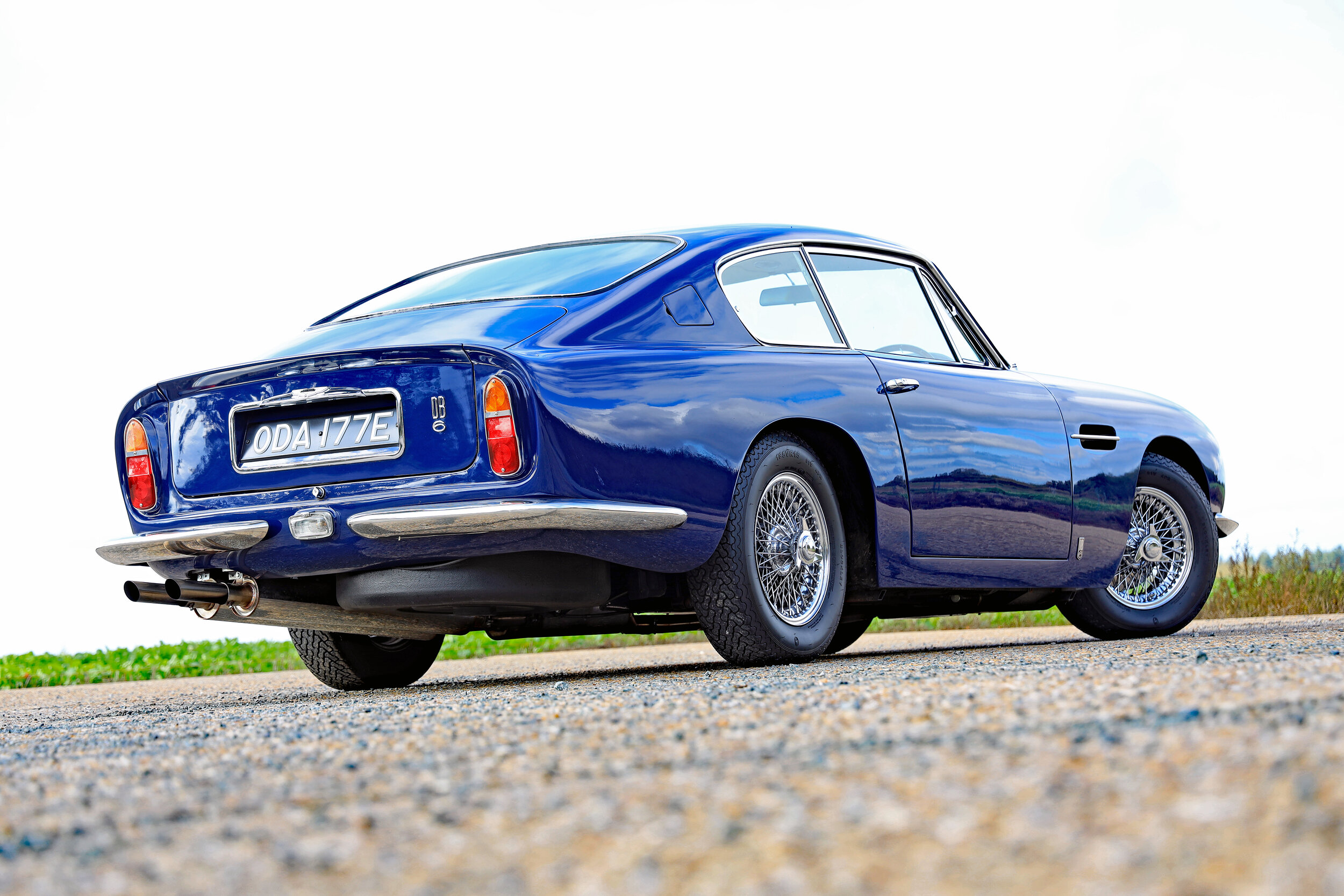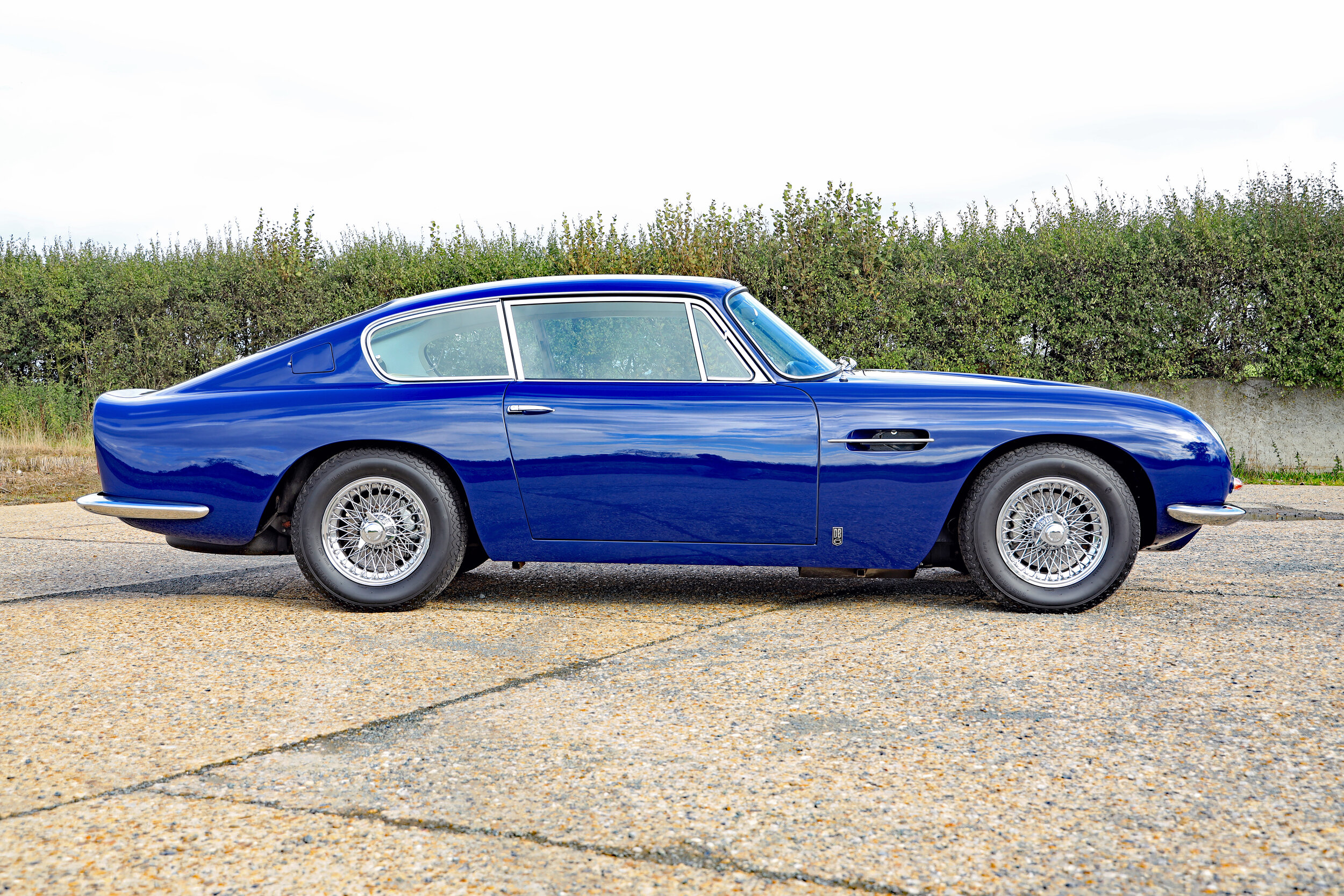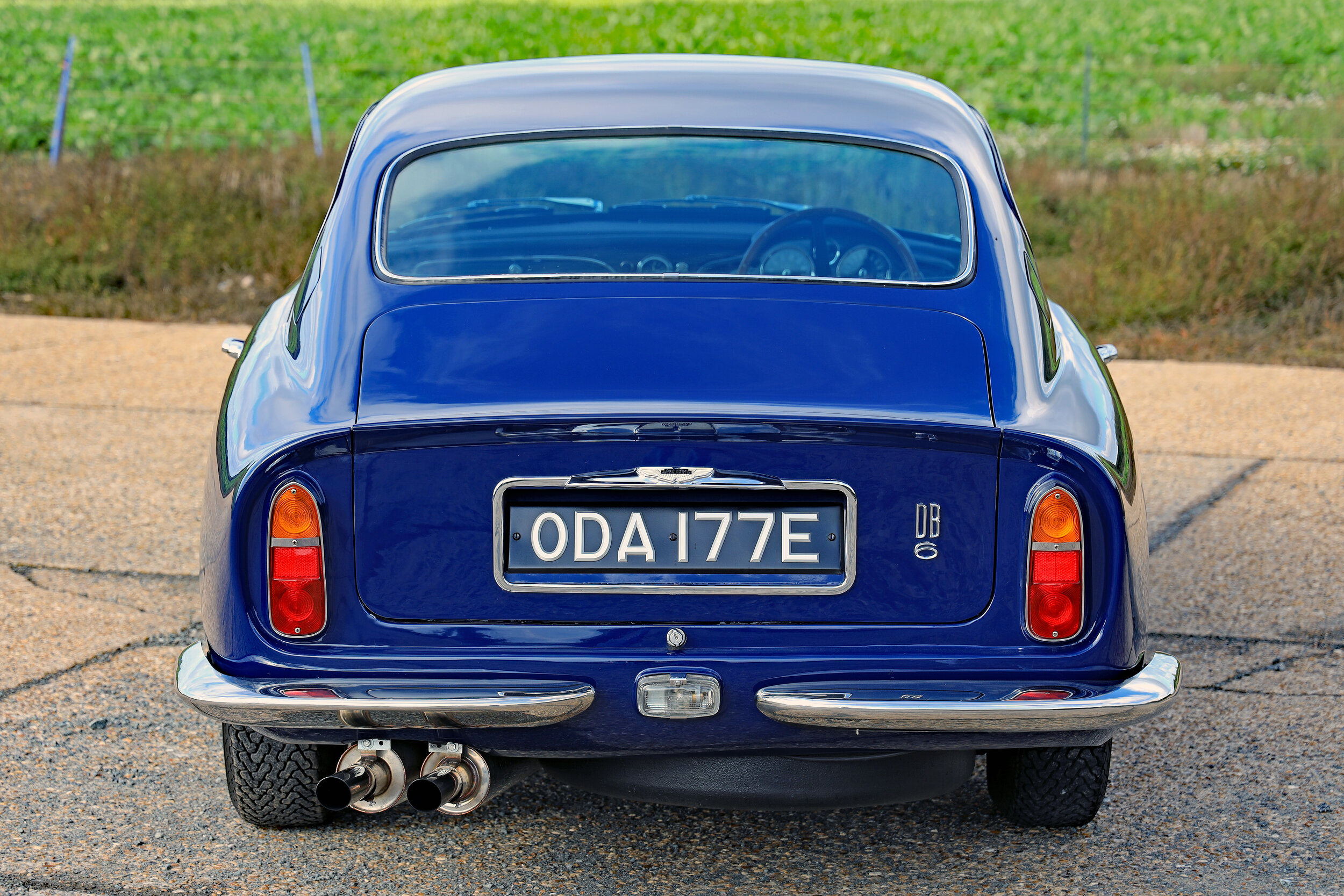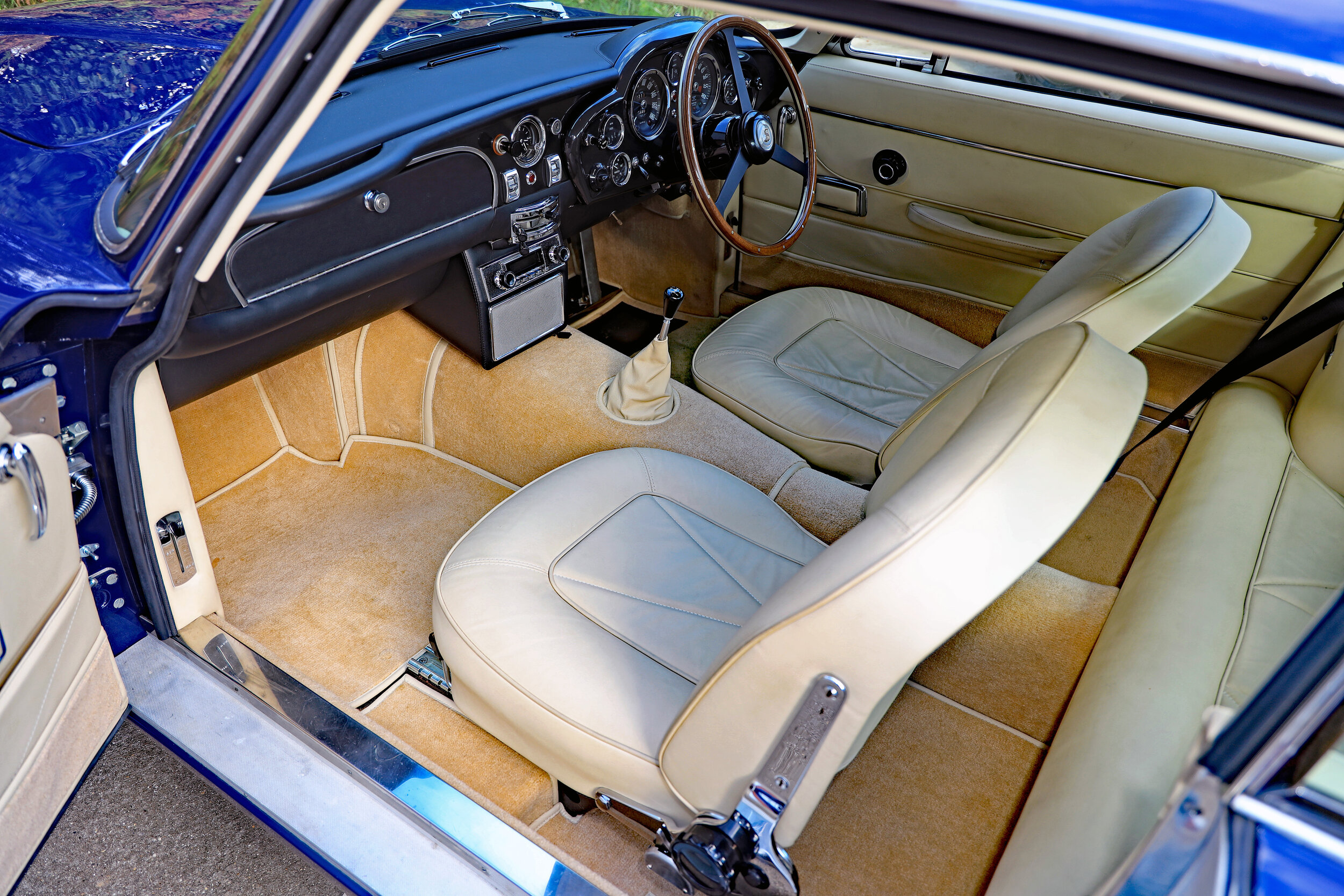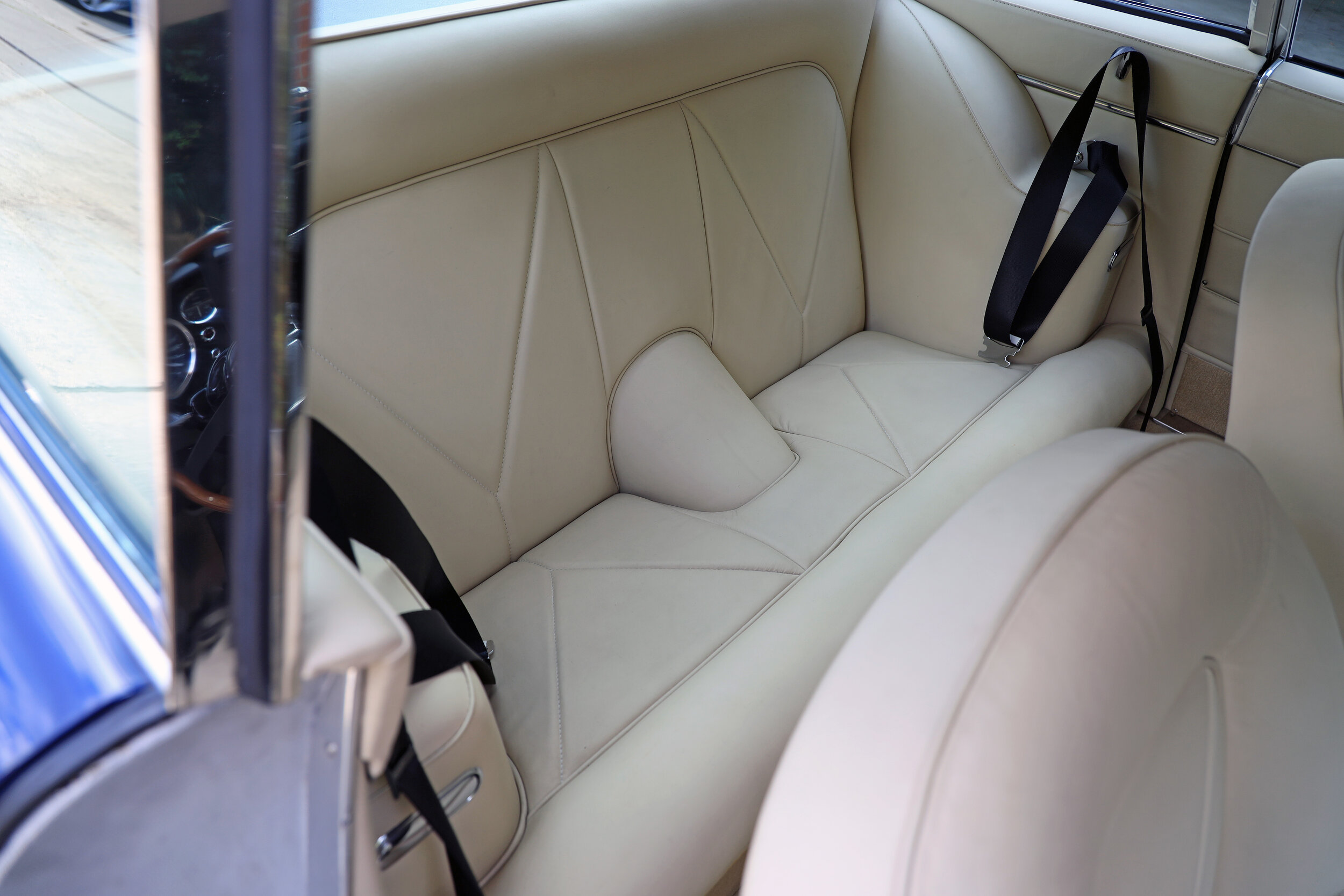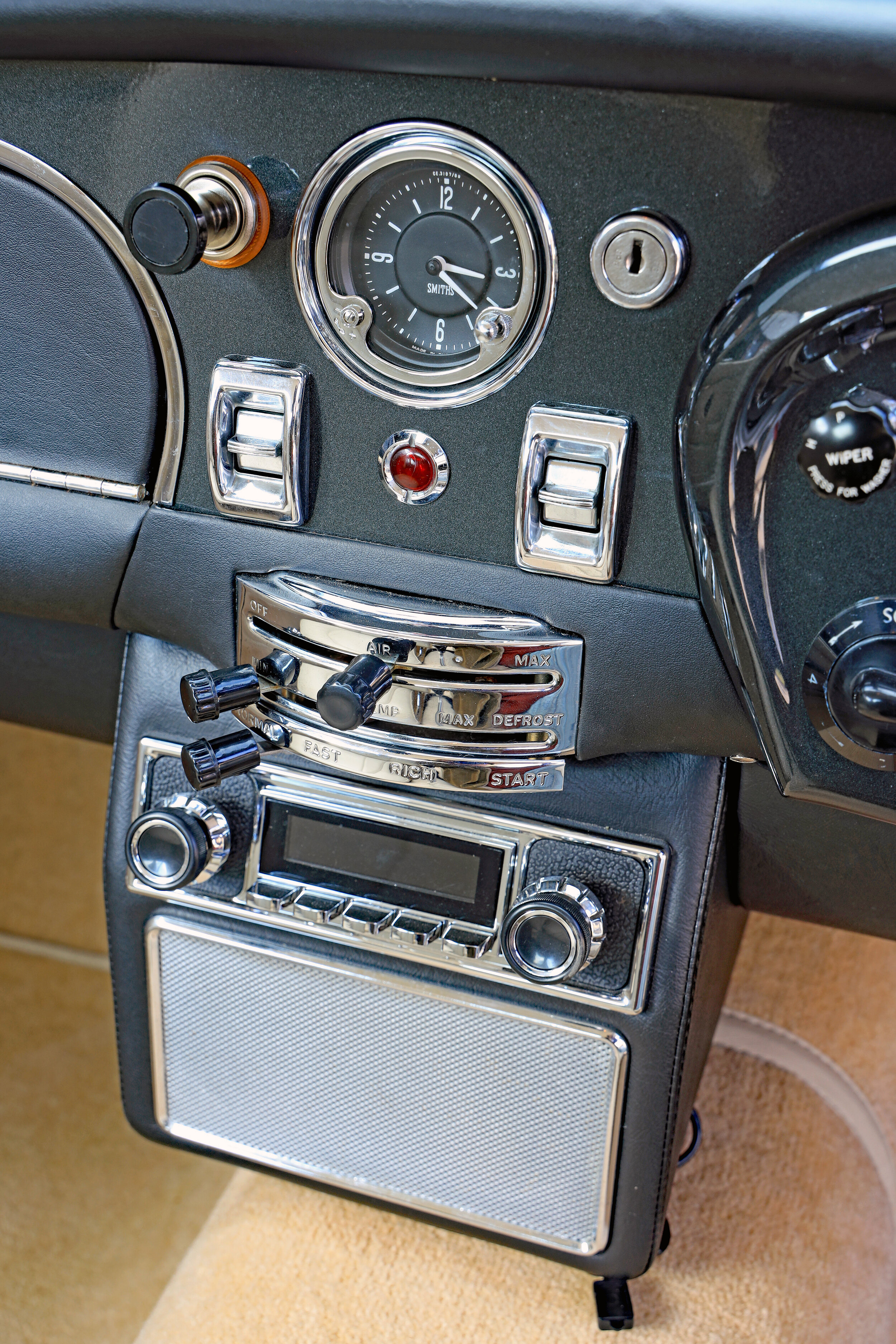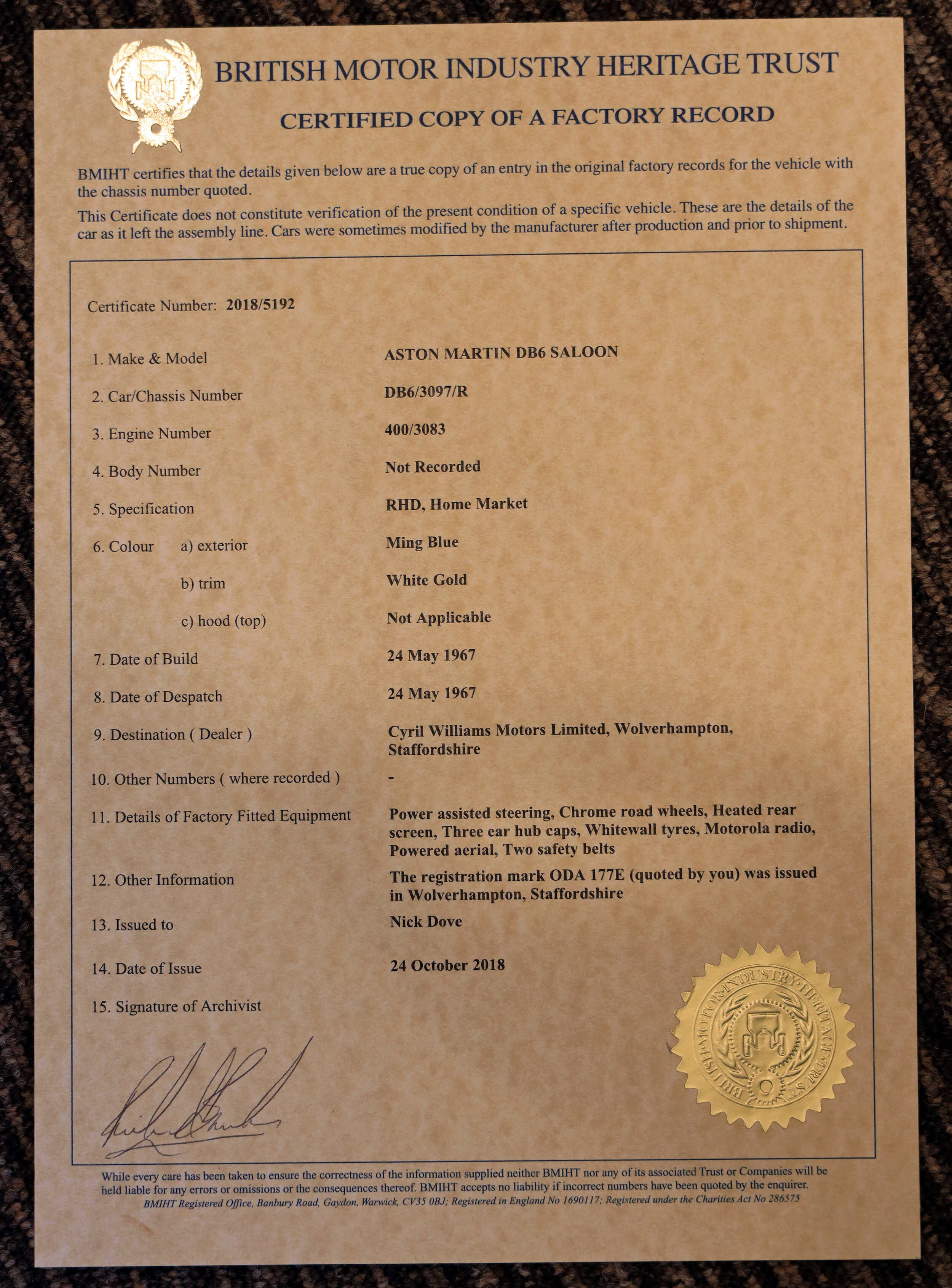PRICE £ SOLD
YEAR 1967
ENGINE 3095cc/6-cyl/DOHC/Triple SU HD8 carburettors (upgraded to 4.2 litres)
POWER 282bhp@5750rpm
MAXIMUM SPEED 145mph
0-60MPH 6.5sec
GEARBOX RWD, five-speed manual
MILEAGE 26,640 miles
MOT Full
CHASSIS NUMBER 3087/R
ENGINE NUMBER 400/3083
COLOUR Ming Blue
INTERIOR White Gold
WIDTH 1676mm
LENGTH 4623mm
BACKGROUND
You have to feel a little sorry for the DB6… although sympathy isn’t generally a sentiment conjured up by Aston Martins. Despite being the ultimate evolution of the DB4 and DB5 models, for many years it wasn’t nearly so highly regarded as its predecessors, even though it is (and whisper this softly) the best of the bunch.
Purists liked the original DB4 because it was the origin of the species and because of its legendary GT and Zagato variants. Everybody else liked the DB5 because the world’s least secret secret agent, James Bond, drove one. That left the DB6 somewhat in their shadows. And that’s quite an unjustified state of affairs when you look at just how good the DB6 is.
It shares most of the same good looks as the DB4 and DB5, albeit with a few handsome nips and tucks of its own, such as the split front bumpers and be-spoilered Kamm tail. Plus there’s the option of two levels of engine output; 282bhp in standard form and 325bhp in Vantage trim. But thanks to its longer wheelbase and re-profiled roof, there’s more space inside, especially for anybody in the rear. However, this extra capacity isn’t at the expense of performance, for the more steeply raked windscreen and Kamm tail improved the aerodynamics and thus makes it slip through the air more easily, as well as enhances road manners and improves handling. And there were more mechanical and creature comfort options too, such as power steering (which this car has) and ultimately the choice of fuel injection on the MkII variant.
However, proving that there is some justice in the world, in recent years, the DB6 has become just as appreciated as its older siblings - as the last of the trio of Superleggera-designed David Brown models. And with a car as remarkable as this one, there is a great deal to appreciate.
THE VEHICLE
Finished in stunning Ming Blue with a White Gold interior, this DB6 rolled out of the Newport Pagnell factory on 24 May 1967, from where it was dispatched to Cyril Williams Motors in Wolverhampton, Staffordshire. Its first few years are a little vague, but in 1973, with 53,000 miles on its clock, it was bought by another Staffordshire owner, who started the comprehensive paperwork record of its life that has been kept up until this day.
In 1979, he took the car for its its first restoration, which lasted a total of four years and included a full chassis and body rebuild, as well as a mechanical overhaul. Its odometer was reset at that point. That took it into the 1980s, during which it received regular use. However, it was taken off the road in 1990 and, after 18 years of not being used, a second restoration started, at Classic Astons in Staffordshire. This was another long-term and comprehensive job; the task begun in 2008 lasted until 2016, costing over £100,000. A new owner took it over during 2015 and completed the restoration.
Aside from the body being completely rebuilt, ancillaries were powder-coated, and the interior completely retrimmed. The suspension received polyurethane bushes as well as an anti-rollbar upgrade. Meanwhile, the engine was taken to renowned engine specialist RS Williams, where it was uprated to 4.2 litres and received new components such as a high-torque starter motor, reconditioned alternator and electronic ignition.
Since the 2016 completion, the DB6 has covered comparatively few miles, with its odometer now reading 26,640 miles - and, remember, it was zeroed back at the start of the 1980s when its initial restoration was completed. It remains in excellent condition, inside and out, and drives superbly. But let’s take a closer look.
BODYWORK
Unlike a lot of Aston Martins, which get repainted in a different colour when restored (Silver Birch being particularly popular, of course), this one remains in the same Ming Blue that it left Newport Pagnell with. It’s a very rich, shiny, deep blue in near exceptional condition throughout. There are only a couple of tiny blemishes on the nose, underneath the Aston Martin badge - elsewhere, it’s like this car was driven out of the paintshop just last week.
The chrome is similarly spotless; across the exterior, it’s bright, shiny and untarnished. There are a few superficial scratches on the aluminium front grille, but that is as far as the brightwork imperfections go. Turning to the wire wheels, they’re just as good as everything else; very clean, free from corrosion or marking, and with no looseness to any of the spokes. Surrounding the wires are Brockley 185 VR15 91V tyres of 2013 vintage, which haven’t covered too many miles since fitment. There’s plenty of tread left - no need for an imminent trip to Kwik-Fit for any new owner.
INTERIOR
The inside is arguably even nicer than the outside, if such a thing was possible. The White Gold trim - or cream leather, if you want a more layman’s description - gives the appearance of hardly being used. In fact, we’d question if the rear ones have even seen the passage of any posteriors. There’s only the most minimal of creasing to the front seats and absolutely no wear or tear at all.
The carpets are similarly unmarked - and given that they’re in the same light shade as the seats and door cards etc, that’s quite some achievement. Overhead, the headlining is also speckless, with no discolouring.
All of the gauges look just-out-of-the-box fresh, as does the switchgear - there’s no worn lettering or dirt from fingers. With the engine running, all the gauges function as they should and return healthy readings. Even the clock works - and anybody who has sampled an classic DB will know that’s quite a rarity, as they’re often overlooked even on cars that have been restored. There are no scratches on either the wood or the metal of the steering wheel.
There’s one concession to modernity in the form of a retro-look digital radio, with an MP3 lead attached. However, because this has the appearance of the kind of Radiomobile (or similar) unit that would have typically have been fitted to an Aston of this vintage, it blends in very well with its historic surroundings.
ENGINE AND RUNNING GEAR
Browse the paperwork and you’ll find a bill just for detailing the underbonnet area. And it was definitely worth the investment because, when you lift the lid, it’s more like a mechanical art installation than a working engine bay.
The cleanliness is quite astonishing - for example, the area around the three SU carburettors, which often gets grubby, is utterly free of any dirt. The carbs were rebuilt with silver zinc-treated and polished nickel-plated parts incidentally, while the neighbouring cam covers have been stove-enamelled and the the exhaust manifold is polished stainless steel. The fluids are clean and at the levels they should be, and the engine starts easily and runs well. There are no leaks apparent.
Quite frankly, this is a textbook example of how a DB6 engine bay should look, with the attention to detail including an Aston Martin-branded chrome plug lead clip to help keep the HT wiring neat. Even the insulation material on the underside of the bonnet is in excellent order. Keeping it all looking this good may well be the biggest challenge for any new owner.
Underneath, the car has been comprehensively undersealed, but the nuts and bolts that emerge in areas such as the inner front wings look factory-fresh and are free from any dirt, let alone corrosion.
On the road, this Aston performs exactly as you’d expect of something that has received so much attention. It’s docile enough around urban areas, where the vast amount of torque means that you don’t have to use the five-speed gearbox that much - not that it isn’t a pleasure to do so, as it slides easily through all its ratios, with a smooth and satisfying action. The steering is tight and the handling superb - a benefit of the polyurethane bushes, uprated anti-roll bar and power steering - with the brakes biting quickly and sharply. The power steering also makes this car easy around town, as you won’t have to wrestle with a heavy wheel at low speeds.
SUMMARY
Even by Aston Martin standards of restoration - which are usually painstaking and exacting - this is a remarkable car in remarkable order. It has had very little use since its eight-year restoration, which was finished just four years ago. The result is a DB6 that is practically faultless and, even among other Aston Martins, it will turn heads. If you want incontrovertible evidence of just how good a ‘6 can be - especially in comparison to a ‘4 or ‘5 - then this is the case that will prove the point. This is as much a car to drive and enjoy as it is potentially a financial investment.
Whilst Greenside Cars Ltd has tried to ensure information and assessments are accurate and complete, we are aware that some errors and omissions may occur from time to time. We are not able, therefore, to guarantee the accuracy of information and cannot accept liability for loss or damage arising from it. We highly recommend that you examine any vehicle to check the reliability of the information supplied. Please contact us for further details, images, or to arrange a viewing of this Aston Martin DB6.
1967 Aston Martin DB6 MkI
PRICE
£ SOLD
____________________
YEAR
1967
____________________
ENGINE
3095cc/6-cyl/DOHC/Triple SU HD8 carburettors (upgraded to 4.2 litres)
____________________
MILEAGE
26640
____________________
COLOUR
Ming Blue
____________________
To enquire about this vehicle or request a viewing, please contact us via phone or email.
The DB6 comes with its British Motor Industry Heritage Certificate
The chassis and engine numbers are the ones the DB6 left the Newport Pagnell factory with, although the engine has been rebuilt and upgraded to 4.2 litres
Attention to detail includes an Aston Martin-branded spark plug clip in the engine bay
Inside the boot, you’ll find an original equipment tool roll, for even more
authenticity



